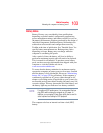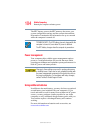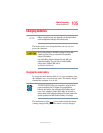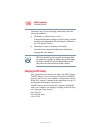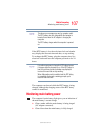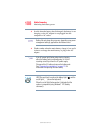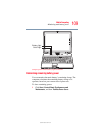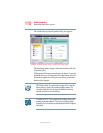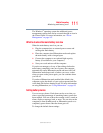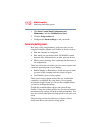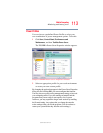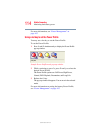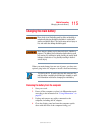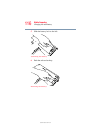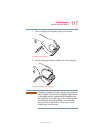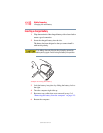
111
Mobile Computing
Monitoring main battery power
5.375 x 8.375 ver 2.3.2
The Windows
®
operating system has additional power
management options that can be accessed through an icon in
the Control Panel. For more information, see “Power
Management” on page 167.
What to do when the main battery runs low
When the main battery runs low you can:
❖
Plug the computer into an external power source and
recharge the main battery
❖ Place the computer into Hibernation mode and replace
the main battery with a charged spare
❖ Connect the computer to an optional high capacity
battery (if available for your computer)
❖ Save your work and turn off the computer
If you do not manage to do any of these things before the
main battery completely runs out of power, the computer
automatically enters Hibernation mode and turns itself off.
Hibernation mode keeps track of where you were, so that
when you turn on the power again, you can continue where
you left off.
If you have Hibernation mode enabled (the default), the
computer copies the details of your open programs and files
to the hard disk before shutting down. For more information
on using Hibernation, see “Using Hibernation” on page 95.
Setting battery alarms
You can set two alarms. Each alarm can be set to alert you
when a specified percentage of remaining battery power has
been reached. You can set how the warning occurs: sound an
alarm, display a message, both, or none. You can also set the
computer to enter Standby mode or Hibernation mode or to
completely power down when the alarm goes off.
To change the default alarm settings:



